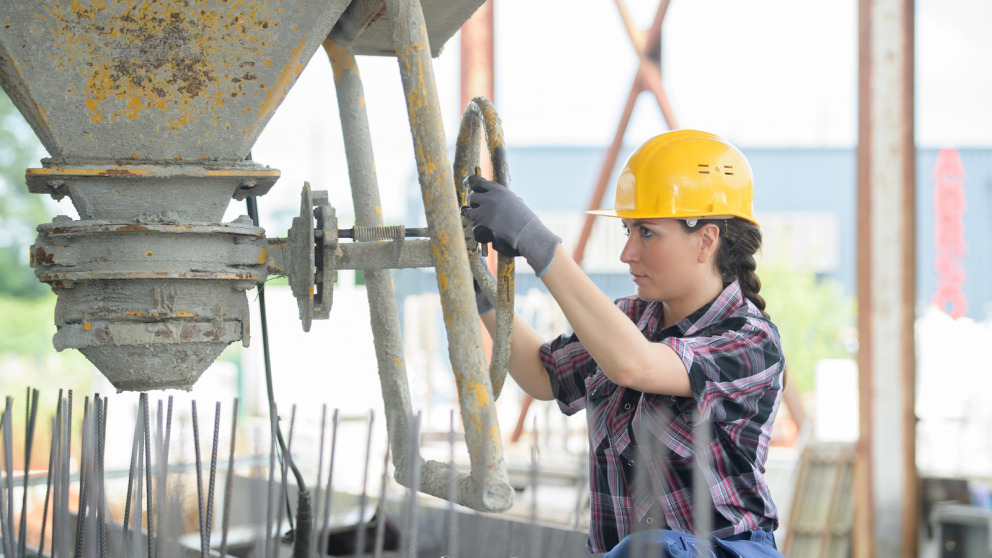CO2 carbonation: cleaning-up the cement industry?
09.06.2020

In the European Commission’s “Coronavirus response”, President von der Leyen recently announced the aim of building “a modern, clean and healthy economy, which secures the livelihoods of the next generation”. But what does that mean for high emitting industrial sectors such as cement production? Are they part of “yesterday’s economy”, or will they successfully transition to more sustainable modes of production? Over half of all the materials that humans use on Earth are “cementitious” – including concrete, cement and other building materials – and it is difficult to imagine a life without cement.
Efficiency measures are reaching their limits – so what’s next?
As a major contributor to climate change (the sector accounts for approximately 5% of total global anthropogenic emissions), the cement industry is facing pressure to transition to greenhouse gas neutral production pathways. Just recently Cembureau, the European Cement Association, released their 2050 Carbon Neutrality Roadmap, summarizing the technological options. Several strategic levers are described that can reduce the CO2 footprint of cement production; while many efficiency gains have been achieved in conventional production processes in recent decades, significant technical obstacles must be overcome to achieve greenhouse gas neutrality. So called Carbon Capture and Utilization or Storage (CCU/CCS) technologies are needed to tackle the “remaining” emissions.
CO2 carbonation may help solve the problem
CO2 carbonation, also known as CO2 mineralisation, is a CCU concept that has attracted considerable attention from researchers, entrepreneurs and policymakers in recent years. In this approach, CO2 is reacted with activated minerals to form carbonates and store CO2 permanently. Innovations of this type could become an option for the cement sector, as they provide a way of using captured CO2 as a raw material in the production of building materials. The carbonates could potentially be used for multiple purposes, such as fillers or cement additives or for land reclamation projects. Some applications have already been acknowledged by the European Court of Justice as valid CO2 storage solutions under the European Emission Trading Scheme (EU ETS).
First CO2-based building materials are already on the market
A handful of lighthouse projects around the globe have demonstrated the use of CO2 carbonation in commercial settings; examples include Solidia (low carbon cement) and CarbonCure (ready mix concrete). However, these products are often comparatively expensive or serve local (niche) markets, for example Carbon8 (aggregates as waste treatment) or Mineral Carbonation International (cement additives). Many other carbonation technologies are currently far from mature and require more R&D. This includes the BMBF-funded project CO2Min, which is investigating the use of natural minerals in low carbon cement. The further development of CO2 carbonation technologies is an important element in many strategic research agendas, including those of the National Academies of Sciences, the Energy Transitions Commission and the Global CO2 Initiative. CCS-type CO2 carbonation has also been proposed to achieve large-scale negative emissions but these proposals remain thought experiments rather than actual solutions for existing high-emitting sectors.
Are CO2 carbonation pathways viable for the environment, the economy, and society?
Setting aside the technical challenges, it is essential that we find solutions that are environmentally, economically and also societally viable. An increasing number of studies are accordingly evaluating the expected contributions and associated risks of CO2 carbonation pathways, with promising results. A recent life-cycle assessment, for example, showed that in an ideal case, the mineralization of one tonne CO2 could avoid more than three times more greenhouse gas emissions than merely storing one tonne of CO2. Nevertheless, it is inevitable that the large scale deployment of CO2 carbonation will also have its drawbacks. An increased demand for minerals, for example, could translate into more transport emissions and potentially additional mining or repository sites. Given these risks, a deep understanding of the broader environmental, economic and societal impacts is needed.
IASS projects address the role of industry in societal transformations
The knowledge provided by these assessments and other research is needed to guide decision-making that will shape the transformation of high-emitting industries beyond the energy sector. Ensuring that policymaking takes a broader view requires research that covers both the environmental, economic and societal dimensions of change. Long term strategies need to be developed, using innovative and co-creative forms of cooperation between industry and science to analyse, discuss and redefine the role of industrial actors in societal transformation processes.
Projects at the IASS address issues from diverse perspectives. An upcoming workshop organised under the CO2Min project will discuss the latest efforts to “clean up” the cement industry and building sector, and will initiate further dialogues with the aim of exploring and reshaping the future role of industry in a low emission society.